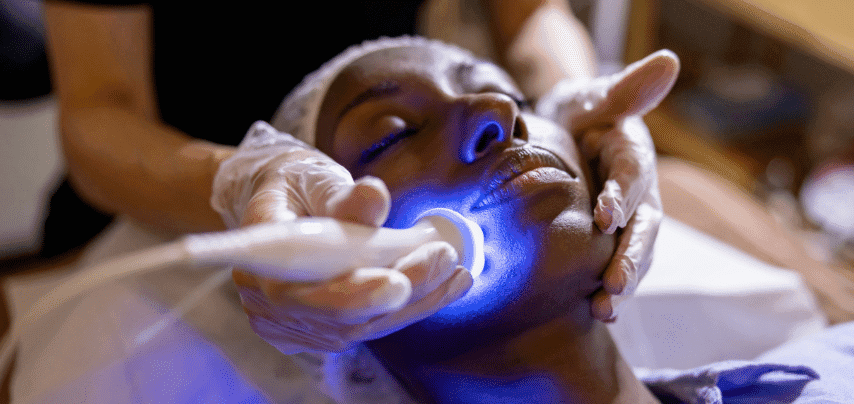The transition to the Patient Safety Incident Response Framework (PSIRF) should now be completed, or close to completion. PSIRF is the new mandated approach to responding to patient safety incidents for providers of NHS services, including those in the independent sector who deliver services under the NHS Standard Contract[1]. It is designed to advance patient safety and create a safety-focused learning culture.
PSIRF was published in August 2022, laying out the process for organisations to follow through six phases, giving providers a year to prepare their organisation before ‘going live’ with the new requirements. PSIRF replaced the Serious Incident Framework (2015) from Autumn 2023.
The aim of PSIRF is to better involve staff, patients and their families when a patient safety incident occurs. It prioritises new learning and improvement alongside engagement and compassion. In moving to PSIRF, an organisation was required to create and agree their plans with stakeholders, including patients and service users, front line staff and integrated care boards (ICB).
It has been observed that capacity in ICBs has meant that their engagement and collaboration[2] for some providers, particularly in the independent sector, has been challenging. However, despite this, those providers have still needed to make progress in any event, with reports of leeway on transition being extended in some cases to the end of the 2023/24 financial year.
PSIRF Recap
The PSIRF supports organisations to make considered and proportionate responses to incidents, with the aim of using its resources to maximise improvement, rather than repeatedly responding to patient safety incidents based on subjective thresholds and definitions of harm, from which new learning will be limited, which was a criticism of the former framework.
PSIRF introduces a range of learning responses that were not used under the Serious Incident Framework, including Patient Safety Incident Investigations (PSII) and others such as Swarm huddles, MDT reviews, After Action Reviews and thematic reviews[3], using different tools and approaches for different circumstances.
Never events and problems in care that are thought more likely than not to have resulted in death will always require a PSII. Other types of incidents also require specific reporting and or review processes to be followed[4]. The types of tools and approaches a provider chooses to use in their organisation needs to be described in the provider’s Patient Safety Incident Response Plan (PSIRP).
NHS England has produced a comprehensive range of resources to support providers and patient safety leaders understand PSIRF and develop their plans and policies, which includes details of approaches that could be adopted in response to a patient safety incident[5].
Planning and Preparation
The requirement for bespoke PSIRPs is a welcome departure from the former SI Framework. However, it is also for this reason that the successful implementation and transition to PSIRF must be based on sound preparation and engagement. It is particularly important for provider boards to appreciate that PSIRF should be approached as a significant organisational and cultural change programme.
As well as training and engagement of stakeholders, organisations are required to produce certain key documents that describe how they are delivering the requirements locally. These need to outline their patient safety priorities and how they will adopt the new tools and methods for incident review and response, staff engagement and training, patient/service user and family engagement, and cultural change.
The PSIRPs are based on each organisation’s local incident profile and their current improvement work, which can be understood through thematic review and analysis of their previous incidents, complaints and claims history. Additionally other feedback sources will provide valuable insight, such as patient surveys, and interviews and focus groups of staff and patients, carers and their families, as well as minutes of quality and safety committees and associated governance forums and observations and audits of patient care. These enable key areas of focus to be identified so the learning response results in the most benefit for patient safety improvement.
The organisation’s PSIRP also requires ICB and provider board approval. PSIRPs must be reviewed every two years, so this should be borne in mind when considering how to measure and monitor its effectiveness. The Plans need to be updated to incorporate new learning, the changing risk profile of an organisation, and any improvement initiatives, so this requires regular proactive action on the part of the board, patient safety leads and those responsible for quality improvement in each organisation.
Step Change
By a majority of six judges to one, the Supreme Court dismissed the Claimants’ appeals. The judgment was decided on two broad bases:
By now, providers should have followed the guidance in developing and implementing their plans and policies, however, we are aware many haven’t transitioned yet, so here’s a reminder of the steps to go through[6] :
- 1 - PSIRF orientation – where an organisation’s PSIRF leads familiarise themselves with the revised framework and associated requirements. This establishes important foundations for PSIRF preparation and subsequent implementation.
- 2 - Diagnostic and discovery – where organisations understand how well developed their systems and processes already are to respond to patient safety incidents for the purpose of learning and improvement. This establishes the strengths and weaknesses of the existing arrangements and defines the necessary improvements in areas that will support PSIRF requirements and transition.
- 3 - Governance and quality monitoring – where organisations begin to define the oversight structures and ways of working they will have in place once they transition to PSIRF.
- 4 - Patient safety incident response planning – for organisations to understand their patient safety incident profile, improvement profile and available resources and then use this information to develop their PSIRP that forms part of a patient safety incident response policy.
- 5 - Curation and agreement of the policy and plan – Drafting and agreeing a policy and plan based on the findings from work undertaken in the preparation phases.
- 6 - Transition – Continuing to adapt and learn as the new designed systems and processes are put in place.
In addition, there are specific requirements on the skillsets, roles and responsibilities of those overseeing and leading on the learning responses, in particular in respect of the leadership at the board, the engagement of staff and patients (aligned to the Duty of Candour and Being Open principles), and the Patient Safety Incident Investigations (PSII)[7} .
On the Record
The PSIRF transition extends beyond the development of the PSIRP and incident response policy for a provider. It’s essential that organisations remember that regardless of the type of learning response following a patient safety incident, all the documentation generated will be disclosable in a Coroner’s inquest or other proceedings such as claims.
Significantly, and unlike the previous Serious Incident Framework, once an organisation has transitioned to PSIRF, quality assurance accountability sits with the provider’s board and not the ICB.
Boards therefore need to ensure their oversight arrangements are robust and would stand up to scrutiny. Remember, where a Coroner might have previously looked to a serious incident investigation report, these will no longer be available and so other evidence will be sought. The same can be said for regulators and other stakeholders.
Therefore, good governance is paramount, with clear policies regarding records management needing to be made, clearly communicated and assured. Records should be centrally held, with standardisation across the documentation for each of the types of response (using the national templates available) and formal reporting being prudent.
Things to ensure and assure in managing the steps to PSIRF and beyond
- Dedicated leadership of PSIRF at all levels across the organisation with the right skills, capacity, support and resource, with well-communicated clarity of roles, responsibilities and purpose.
- Commitment, visible leadership and engagement by the board and its committee accountable for patient safety assurance.
- Plans describing the skills and training requirements for all relevant staff across the organisation (carry out a training needs analysis). This should include the patient safety team and other safety leads, investigators, those overseeing PSIRF, those implementing learning responses, handling complaints and concerns, identifying, reporting and managing incidents locally, as well as leads for associated priorities including but not limited to Duty of Candour, just culture, Freedom to Speak Up, organisational learning and training, legal teams, medical examiners, governance leads, comms leads, etc.
- Be continuously conscious of and minimise unnecessary duplication and take steps to understand the associated risks through and across transition, boundaries and beyond. Consider the impact on other strategic priorities and ensure PSIRF is clearly articulated and monitored through robust governance arrangements.
- Training, comprehensive guidance and support for staff including policies, procedures, tools and resources are easily accessible and available for staff e.g. visible on intranet pages and in hard copy locally as appropriate.
- Qualified external training that meets PSIRFs standards is obtained as required.
- Clear, measurable and monitored plans for PSIRF implementation, that includes a comprehensive communication plan, agreed by the board and its committee accountable for patient safety assurance.
- Incidents software meets requirements for good quality data capture and reporting.
- Clear reporting requirements, using standard templates and good corporate record keeping.
- Robust quality assurance arrangements to ensure investigations, reviews and other learning responses meet required standards and are conducted for learning.
- Monitoring arrangements of patient complaints, claims and reputational issues are clearly defined, with an appropriate board reporting schedule and senior lead identified.
- Systems and roles are clear as to how learning will be obtained and how learning will be shared internally across the organisation and externally with others.
- Quality improvement actions are based on aggregated understanding of learning and risk, ensuring benefits realisation and review measures are factored into approaches and reporting.
- Clear, dynamic and proactive staff and patient, family and carer engagement plans are in place. This includes clear arrangements for how, when and who will lead.
- Communication strategy in place for PSIRF changes, decision making and reporting.
- PSIRP includes an established and agreed criteria and thresholds for investigations and other learning responses within the organisation, which is available and compassionately explained to patients and families why there will be variation in the approach to patient safety incidents in the organisation.
- All staff who engage with patients, families and carers are trained, engaged and understand the changes PSIRF brings and are supported (with training, time and resources) to communicate the new arrangements.
- Engage Coroners and regulators about the organisation’s plan and approach, documentation, evidence and assurance methods.
- Publish patient and service user information about PSIRF and the organisation’s approach to learning from patient safety events, ensuring it is in easily accessible formats, alongside the organisation’s policy and plan.
Altea Plus recognise that transitioning to PSIRF and embedding the changes can be challenging, especially for small and medium sized providers in the independent sector, and we would encourage brokers and providers to speak to us about how we can help.
[1] Primary care organisations and GPs are not required to adopt PSIRF at this stage.
[2] Described in the NHS PSIRF framework guide in the section ‘Responsibilities of the ICB lead’ and states “The ICB lead must work with each provider in their system to develop and maintain its local patient safety incident response policy and plan”.
[3] Patient Safety Incident Investigation (PSII) – is a systems-focused investigation that takes place when an incident or near miss has significant patient safety implications and there is the potential for new learning.
After Action Review (AAR) – is an interactive method focussed on capturing learning from tasks in order to avoid failure and promote success in the future.
Thematic Review – typically using qualitative data across multiple sources, incident responses or pathways, aiming to identify patterns to help answer questions, show links or identify issues.
Swarm Huddle – involves staff ‘swarming’ together as soon as possible after an incident to quickly analyse what happened, how it happened and decide what needs to be done to reduce risk.
[4] See the NHS England ‘Guide to responding proportionately to patient safety incidents’.
[5] NHS England » Patient Safety Incident Response Framework
[6] Per NHS England PSIRF preparation guidance, which suggests the steps will take up to 12 months to complete.
[7] Full details of required roles and responsibilities and the standards can be found on the NHS England PSIRF web pages
The information contained in this article does not represent a complete analysis of the topics presented and is provided for information purposes only. It is not intended as legal advice and no responsibility can be accepted by Altea Insurance for any reliance placed upon it. Legal advice should always be obtained before applying any information to particular circumstances.



